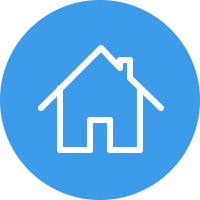
The Very Hungary caterpillar

Why is appropriate for EC learners?
This story was written at appropriate level for KG students. Therefore, the content of the story suits the cognitive level of children at this age (4-5) years old. For example, Sunday, Monday.....etc. This story describes and shows the different stages of the butterfly by using clear pictures so that help children to understand the text. The Very Hungry Caterpillar story pages look as if the caterpillar has eaten his way through the pages so that makes it interesting for children.
Outcome:
£ Literacy
KRRM3 -Retell a sequence of events in a story with beginning, middle and end. Children will discuss events at the beginning, middle, and end of the story, and then sequence the event. For example, retell a sequence of events in this story with what happened first, next, last to the Caterpillar.
£ Math
KINS4 - Represent quantities from 1-5 using the concrete material. At this age many children can say their numbers to 5 or 9, but have a hard time actually counting objects. So this story will help children to focus on counting objects. Also, they can count all the things the caterpillar ate while they read.
£ Science
KES3: Identify features of the natural environment. From this story children will know and discuss the life cycle of a butterfly.
£ Ideas, Knowledge:
From this story, children will learn the positive effects of healthy foods and beverages. Also, this story fits with ages of children at those years because it helps them to know that healthy food provides energy.

I choose day 4 to exapnin how i will teach the studnets the concept of print, phonologicla awareness and letter knowledge
Concept of print
T: flip the book and pretend that she will start the story from the back.
S: no, wrong
T: what I have to do?
S: Fix the book for the
T: show them that cover book and the back cover
T: what the different between them “turn and talk”.
T: the cover book is colorful and has the title, author.
T: the back cove has less color.
Phonological Awareness
Play the song of sound.
T: today will learn the letter ow
T:List’s sing the song of ow
Throw the snow ow ow ow
T: What’s sound the letter ow make?
S: /ow/
T: I will show you card has the letter ow.
T: I say you say
T: show them card has word town, snow and cow.
S: say after the teacher
T: put the letter ay in the board.
T: add n beside the letter ow.
T: ask them “ what word is that”
S: bland the letter ow with n to say now
T: add c behind the letter ow
T: ask them “ what word is that”
S: bland the letter ow with c to say cow.
Letter knowledge
T: will start to teach them the letter ow form.
T: write the letter ow in the using the letter pome.
T: Start in the middle to Make small o. Curve around in a circle, go nice and slow.
T: Small w looks like. It’s great big brother. Down once, go up, down once again. Now finish it off and Go up at the end.
T: are you ready for air writing?
T: prepare your finger pencil
T: the teacher will write the letter in opposite order.
T: Start in the middle to Make small o. Curve around in a circle, go nice and slow.
T: Small w looks like. It’s great big brother. Down once, go up, down once again. Now finish it off and Go up at the end.
S: use their finger pencil to write the letter ow like the teacher.
T: put the letter ow in the board and ask them “ what other word can we think of that have sound ow in it.
T: ask the students to turn and talk to find other word have sound ow.
T: let the students to give her the word and write some on the board.
T: points on the word owl and say it.
T: ask the student “ what is the first sound we hear?”
S: it’s has /ow/ sound.
T: what letter makes that sound?
S: letter ow
T: Do we hear another sound and say the word “owl”
S: we hear /l/ sound.
T: what letter makes that sound?
S: letter L
T: know we have the word owl.

